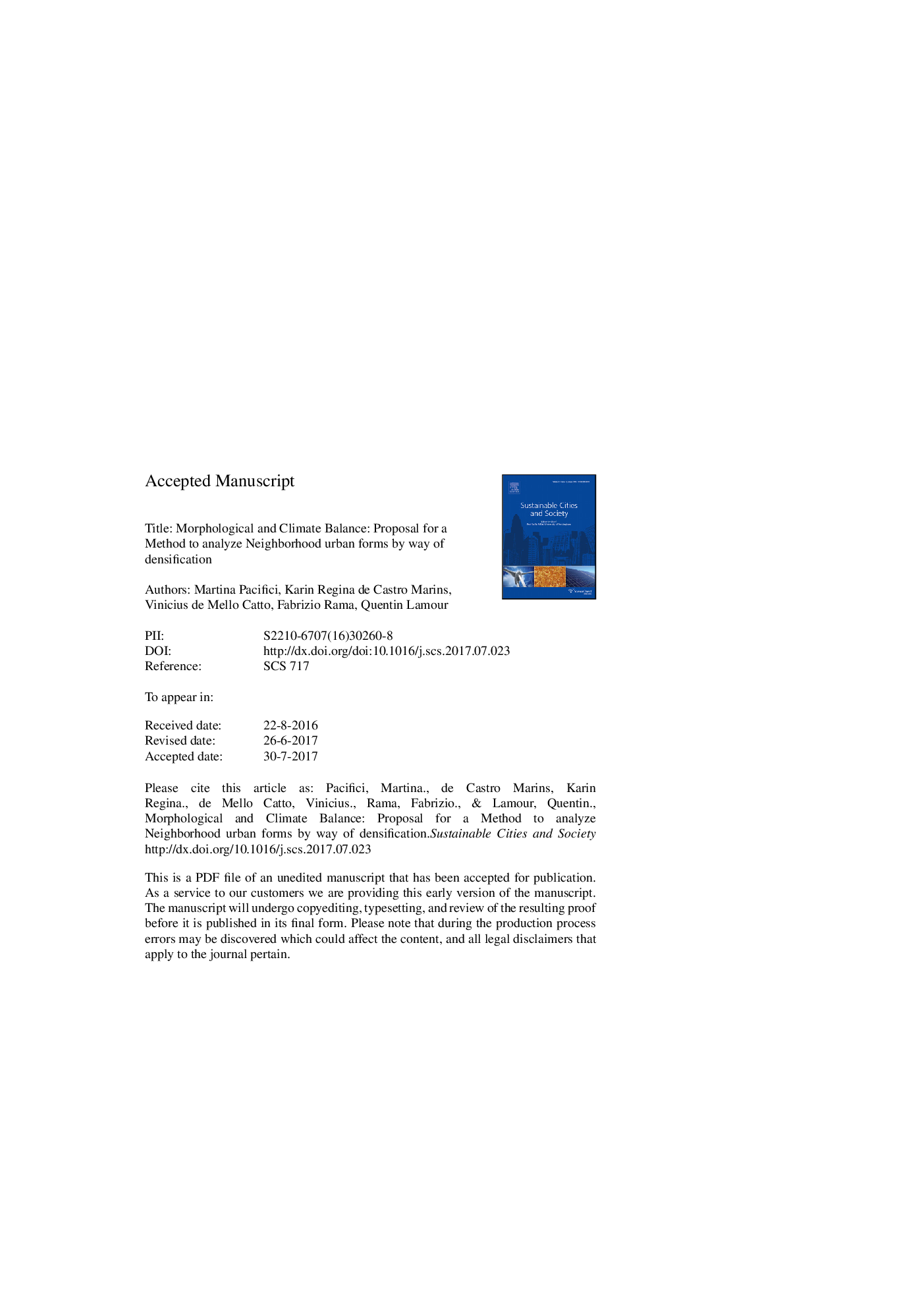| Article ID | Journal | Published Year | Pages | File Type |
|---|---|---|---|---|
| 4928085 | Sustainable Cities and Society | 2017 | 23 Pages |
Abstract
The major cities in the world have adopted certain strategies for people densification to optimize transport costs, to multiply exchanges of goods, to maximize social networking, as well as to promote economic growth. The implementation of such compact cities has profoundly affected the livability of public spaces and the comfort of pedestrians so far. In order to assess the environmental sustainability of this process, a method of analysis is proposed and applied at a local scale. Combining a morphological and climate site assessment, the method is addressed to urban areas affected by a process of built densification or relevant changes. A case study was performed in São Paulo, in an urban area of 100 ha. Inside this domain, different climatic and morphological environments were selected to perform a more detailed comparative analysis of the samples chosen. Climate variability was observed in various points of the domain, despite their very close distances. Three climate zones were identified and morphologically described. The results showed an effective correlation between the spatial arrangement of urban cross-sections and the related climate conditions at the neighborhood level; as a consequence, they could contribute to facing the issue of Compact City Design, improving its environmental performance.
Related Topics
Physical Sciences and Engineering
Energy
Renewable Energy, Sustainability and the Environment
Authors
Martina Pacifici, Karin Regina de Castro Marins, Vinicius de Mello Catto, Fabrizio Rama, Quentin Lamour,
